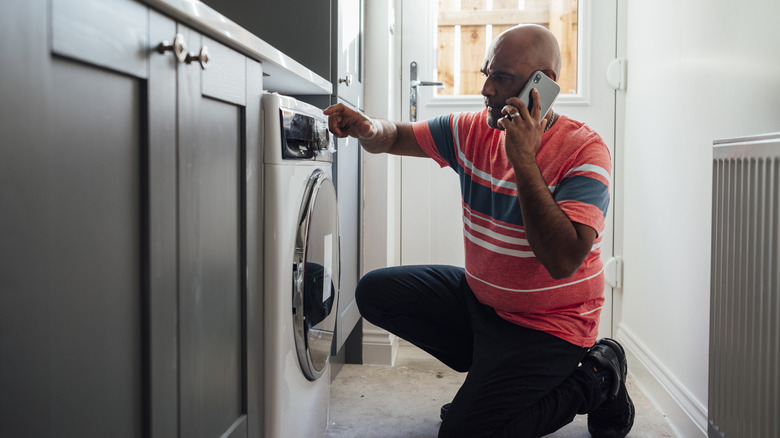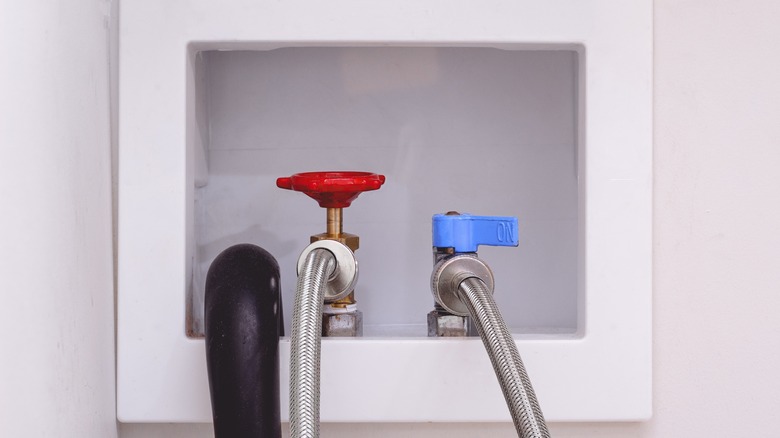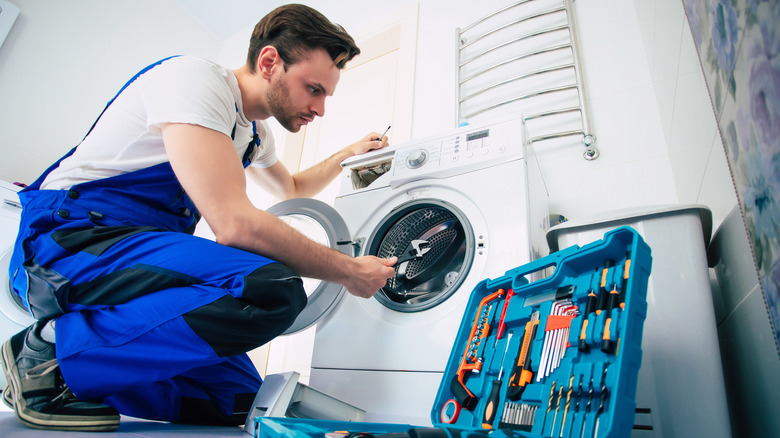What It Means When Your Washing Machine's Drum Isn't Filling With Water
When you notice that your washing machine's drum is not filling with water, it may seem a little odd — after all, where could the water have gone? Multiple potential problems could explain a washing machine that has no water, including a clogged or kinked supply hose, or a problem with its water supply or electric control board. It could also be something as simple as someone turning off the faucet behind the appliance.
Thankfully, some issues that cause a lack of water in your washing machine drum are easily fixed on your own, or they can be corrected with the help of a repair professional. It's also possible that the unit is near the end of its normal lifespan, meaning you may need to replace it. However, because a new washing machine may cost around $800, it's worth trying to repair your appliance before you purchase a new unit.
Checking the most common reasons a washing machine has no water
As you try to figure out why your washing machine's drum is not filling up with water, start by exploring the simplest potential explanations first.
Look at the faucets on the supply lines behind the washing machine to ensure they haven't been turned off. Washing machines have both a cold and hot water supply hose, so check both faucets. If the valve is a lever, it's open when it's parallel to the supply pipe. If the valve is a knob, turn it counterclockwise to restore the flow.
While you're looking at the faucets, check the status of the hoses. Although it's less common, it's possible that someone moved the washing machine and pinched or kinked the hoses, making them unable to supply water to the appliance. If so, straighten out the hoses so that water can move through them. While the appliance is pushed out to check these things, take some time to clean behind the washer too. Don't push the washing machine as tight to the wall when you move it back into place.
Additionally, make sure that your home's water supply is functioning. If you are not receiving water anywhere in the home, ensure no one has turned off the main supply valve. If none of these fixes work, you may have a more complex problem that requires professional help.
More advanced washing machine troubleshooting
If your water supply seems to be working and your hoses look normal, you may need to move onto more extensive troubleshooting.
If you remove the water supply hoses from both the back of the appliance and from the wall, you can check them for clogs. Turn off the washing machine's water supply valves before loosening the hoses with a wrench. Look inside the hoses for an inlet screen. This screen filters out solids or other contaminants in the water supply, and it's possible that these screens can become blocked with gunk and debris over time. Remove the screen from inside the hose and clean it. If the hose seems to have a limited water flow because of gunk stuck to the interior, it may be easier to simply replace it with a new hose.
Other repair options require taking a look inside the washing machine. You could have faulty sensors that indicate the lid is not closed all the way or that the drum area is over its maximum water level. If these switches fail or give off an incorrect reading, the washing machine may not fill with water. If this is the case, you'll most likely need to seek professional help.


